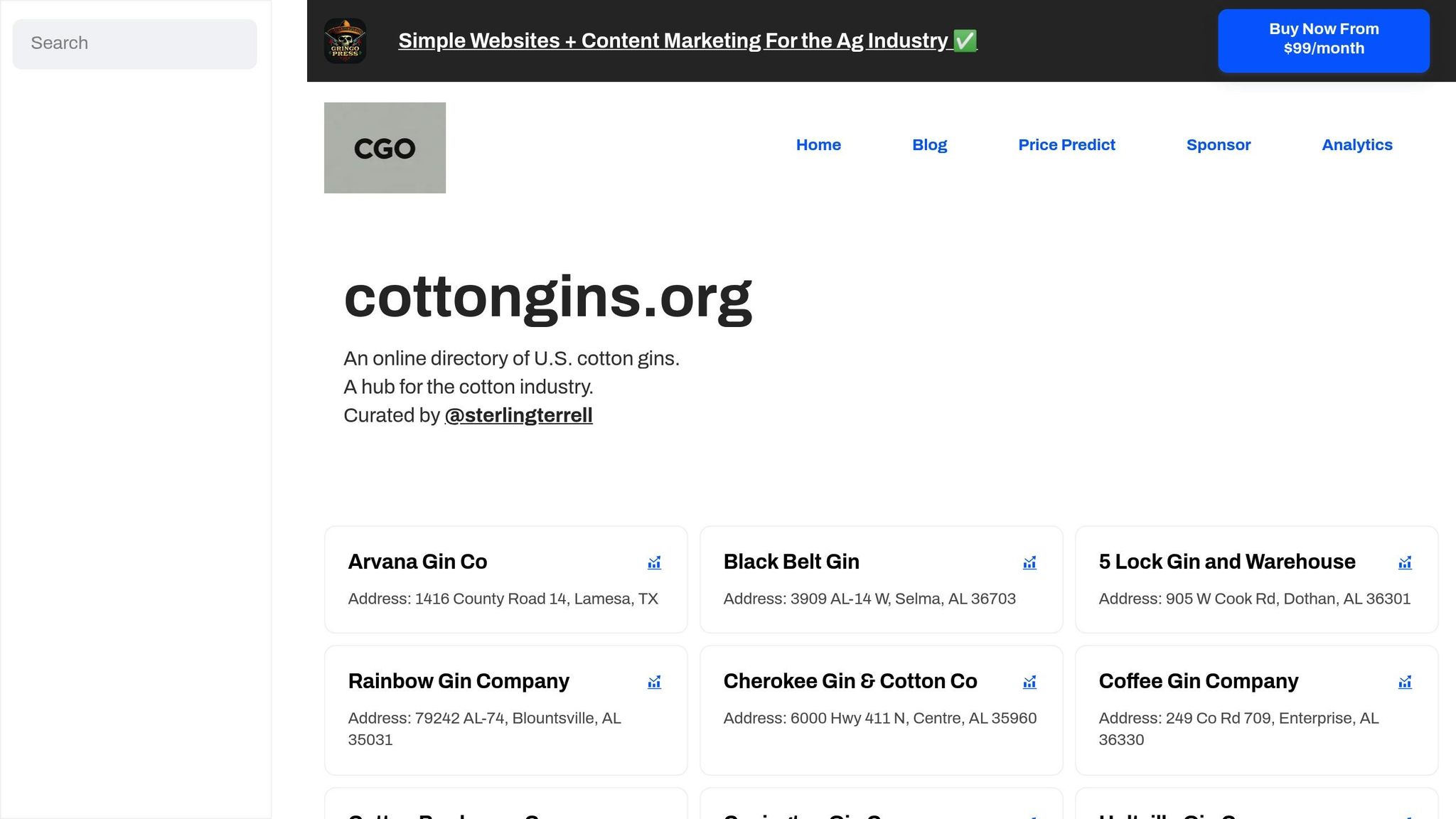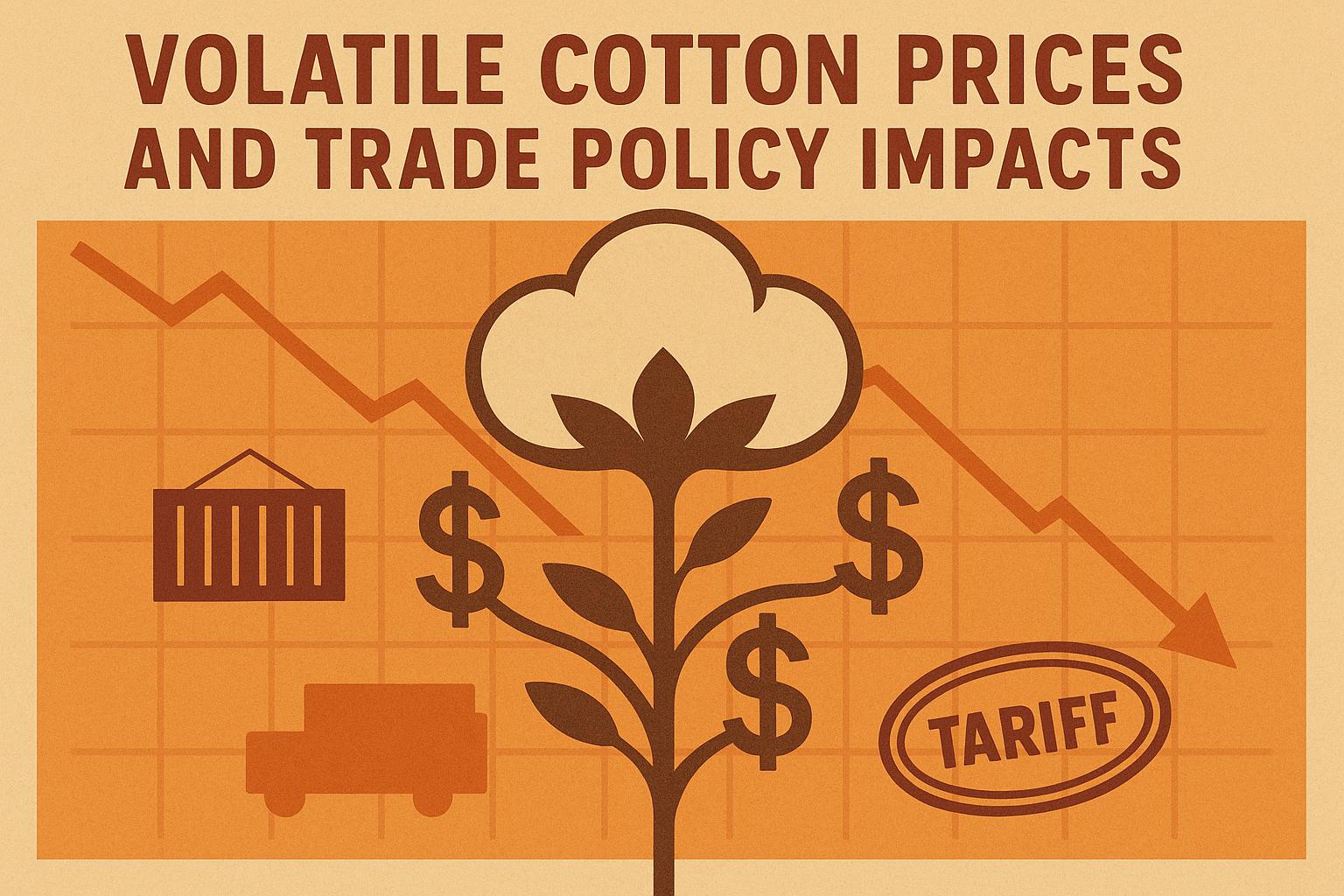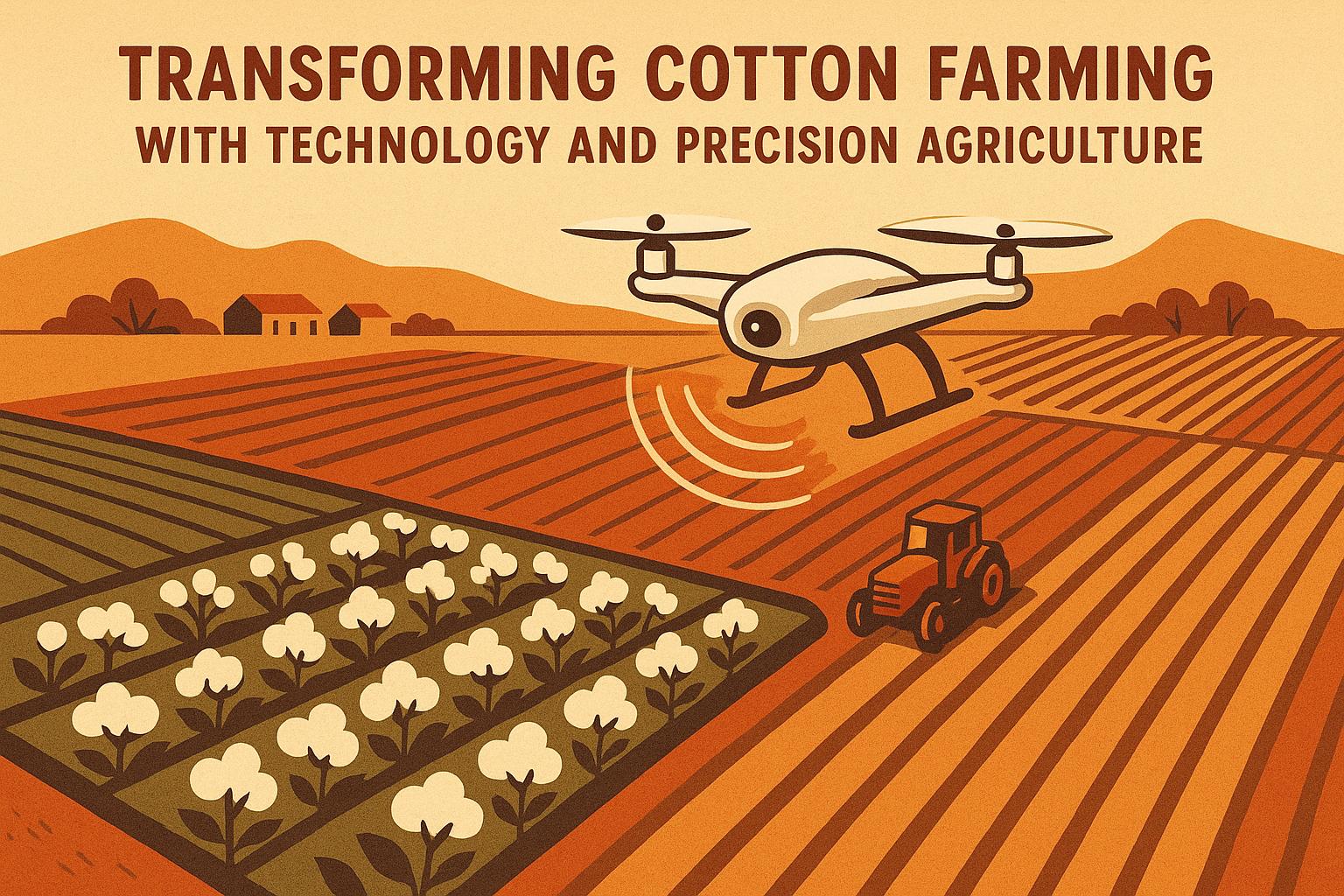Regional cotton gins in the U.S. face unique challenges depending on their location. These issues impact transportation, labor, weather resilience, and regulatory compliance, creating significant hurdles for operators. Here's a quick summary of the main problems across key regions:
- Texas: Transportation bottlenecks, labor shortages, and unpredictable weather (droughts, hailstorms) disrupt operations. Regulatory demands for waste management add financial strain.
- Mid-South (Arkansas, Mississippi, Louisiana, etc.): Fewer gins force farmers to transport cotton longer distances, increasing costs. Flooding and logistical complexities compound the problem.
- California: Strict regulations require specialized ginning processes for certain cotton varieties, raising costs and complicating operations.
- Southeast (Georgia, etc.): Hurricanes, flooding, and poor rural road infrastructure challenge transportation and harvest efficiency. Labor shortages further stress the system.
Each region's conditions demand tailored solutions, such as improved logistics, better workforce strategies, and investments in modern equipment. Without addressing these issues, the cotton supply chain risks further disruption.
Purpose-Built Infrastructure for Agribusiness Growth
1. Texas
As one of the nation's leading cotton producers, Texas grapples with a variety of challenges across its extensive ginning network. These hurdles highlight the broader regional differences within the U.S. cotton ginning industry. The main issues revolve around transportation, weather, labor, and regulatory requirements.
Transportation and Logistics
Transportation bottlenecks are a recurring headache for Texas cotton gins, especially during the busy harvest season. Limited rail capacity forces operators to compete with other agricultural sectors for freight services, often leading to delays.
The Port of Houston plays a key role in exporting Texas cotton, but congestion at the port can cause significant delays. These disruptions often leave gins across the state scrambling for additional storage space, which strains budgets and cash flow.
Trucking is another pain point. A shortage of drivers during peak harvest times drives up transportation costs, forcing gin managers to pay higher rates just to keep operations moving.
Weather and Climate Risks
Unpredictable weather is a constant challenge for Texas cotton gins. Droughts can significantly reduce operations, while heavy rains delay harvests, and hailstorms can devastate crops and damage infrastructure. The Texas Panhandle, in particular, often bears the brunt of these extreme weather conditions, making it a high-risk area for cotton production.
Labor and Workforce Availability
Labor shortages are a major issue for Texas cotton gins. Many rural communities, which once provided a steady workforce, are seeing population declines as younger generations move to cities for more stable job opportunities. This leaves gins struggling to find experienced workers.
Immigration policy changes have also impacted the availability of seasonal labor, forcing operators to raise wages to attract workers. On top of that, training new employees to handle modern ginning equipment is both time-intensive and challenging.
Regulatory and Environmental Compliance
Navigating environmental regulations is another significant hurdle. Texas cotton gins must adhere to a range of standards, which can vary depending on the region. Meeting these demands - such as implementing advanced dust control systems or water recycling technologies - often requires substantial investment.
Waste disposal practices have also evolved. Traditional methods like burning or burying gin trash are being replaced by more sophisticated solutions. Many gins now repurpose this byproduct as cattle feed or biomass fuel, reflecting a shift toward more sustainable practices. These regulatory pressures underscore the regional differences that shape the industry's landscape.
2. Arkansas, Mississippi, Missouri, Louisiana, Tennessee
The Mid-South has seen a major shift in the cotton industry, with fewer processing facilities forcing cotton to travel much farther from fields than in past decades.
Transportation and Logistics
One of the biggest hurdles in this region is the increased distance cotton must travel to reach processing facilities. The decline in active gins has left farmers with no choice but to transport their cotton over much longer distances.
"The fewer gins, the further we have to transport our cotton. This is a trend that began in the 1970s when the module builder system came on the scene, and now with the round modules, cotton is being transported even longer distances for ginning."
– Tommy Valco, USDA/ARS cotton technology transfer and education coordinator
Round module systems, which now handle over half of the ginned cotton in the Mid-South, have contributed to the shift toward centralized ginning facilities. Louisiana is a prime example of this trend. Between 2005 and 2008, the state saw a staggering 75% drop in cotton production, leading to widespread gin closures. This left remaining producers with no option but to transport their cotton over significantly longer routes to reach processing facilities.
These extended routes not only increase transportation costs but also add layers of logistical complexity. And while the distance itself is a challenge, the region’s weather further complicates operations.
Weather and Climate Risks
Beyond transportation issues, the Mid-South faces harsh weather conditions that can disrupt the cotton industry. For example, cotton gins in the Mississippi Delta are especially vulnerable to flooding. Floodwaters can halt operations entirely and cause severe damage to equipment, adding another layer of risk to an already strained system.
3. California and the Southwest
Regulatory and Environmental Compliance
California stands out with its stringent rules for cotton ginning, demanding strict adherence to detailed regulatory measures. For instance, operators must notify the relevant department at least 48 hours before processing any cotton that doesn't meet approval standards. Additionally, white cotton varieties like California Upland and California Pima require departmental supervision during ginning operations to ensure compliance with these regulations.
Specific requirements dictate that nonapproved Pima seed cotton must be processed using roller gins, while nonapproved Upland seed cotton must be saw ginned. To avoid cross-contamination, operators are required to implement proper identification and thorough cleanup procedures. These measures are vital to keep nonapproved cotton lint separate from approved lint and maintain the integrity of operations.
4. Georgia and the Southeast
Weather and Climate Risks
The Southeast cotton belt faces some tough weather challenges. Hurricanes, which hit between June and November, can disrupt ginning operations and transportation networks. Harvest season often brings too much moisture, forcing gins to spend more on drying and pushing up costs. Flooding is another issue, particularly in low-lying areas, where heavy rains can delay planting and shorten the ginning season.
Transportation and Logistics
Moving cotton around the Southeast isn’t always easy. Many rural roads in Georgia’s cotton-producing areas weren’t built to handle the heavy trucks used during harvest. This leads to faster road wear, seasonal weight limits, and extra headaches for logistics planning. While some regions benefit from rail access, most gins rely heavily on highways, which can drive up shipping costs. Proximity to export ports like Savannah, Charleston, and New Orleans is helpful, but inland facilities often face higher transportation expenses to get their cotton to these hubs. These logistical challenges not only affect efficiency but also tie into broader labor issues.
Labor and Workforce Availability
Labor shortages add another layer of complexity for cotton gins in Georgia and the Southeast. During harvest, gins compete with other agricultural operations for workers, making it hard to find enough help. On top of that, rural areas struggle to keep skilled workers. Many experienced operators are nearing retirement, while younger workers are drawn to cities with more stable, year-round jobs. This gap in expertise often forces gins to hire traveling maintenance crews, which raises costs and slows down repairs. Rising labor costs only pile on more pressure, especially for smaller gins trying to stay afloat.
sbb-itb-0e617ca
5. cottongins.org

As regional issues grow more complex, cottongins.org serves as a go-to resource for tackling challenges related to location, labor, and regulations in the cotton gin industry.
Transportation and Logistics
At its core, cottongins.org offers a nationwide directory of cotton gin facilities, organized by county and state. This feature allows users to easily verify existing locations or even add new ones. Sterling Terrell, the creator of this platform, designed it to address the lack of accessible information about gin locations across the country. By providing this centralized directory, the site helps users streamline their planning and logistics, making it easier to integrate location data into broader operational strategies.
Labor and Workforce Availability
The platform doesn’t stop with logistics - it also supports workforce needs. Through targeted sponsorship programs, cottongins.org connects service providers directly with gin operators. These sponsorships range from one-day Featured Posts starting at $200 to monthly packages priced at $400. For those looking for long-term visibility, annual sponsorships come with perks like free sponsored posts, giving businesses a chance to promote their services or showcase important projects.
Regulatory and Environmental Compliance
In addition to its logistical and labor resources, cottongins.org helps operators stay on top of regulatory requirements. Subscribers receive updates on state-specific regulations and industry best practices via email and sponsored content. The platform also leverages social media to share these updates, ensuring the information reaches a larger audience within the cotton gin community.
Regional Comparison: Benefits and Drawbacks
Cotton production varies significantly across regions, largely due to differing regulatory environments. Take California, for example - its stringent emissions standards and strong worker protection laws mean higher initial costs for businesses. However, these measures also encourage more environmentally friendly practices and better working conditions.
On the other hand, states like Texas and parts of the Southeast operate under more lenient regulations. This flexibility can reduce short-term compliance costs, making it easier for businesses to get started. But there's a catch - future policy changes could pose challenges, introducing uncertainty for long-term planning.
These regional differences in regulations play a major role in shaping how businesses approach investments and expansion. For anyone in the industry, understanding these dynamics is key to making informed decisions.
Conclusion
The efficiency and future of cotton gins are deeply tied to the regional infrastructure challenges they face. In Texas, outdated equipment hampers productivity, while in California, strict environmental regulations create unique hurdles. Each area has its own set of issues, demanding solutions tailored to its specific needs.
Upgrading operations through automation, remote monitoring systems, and predictive maintenance is no longer optional - it’s crucial for staying competitive in a fast-evolving market. These updates go beyond simple fixes; they represent the foundation for long-term operational success.
Meeting environmental standards is also a pressing concern. Investments in areas like water recycling, energy-efficient machinery, and emissions reduction are now essential, driven by rising sustainability goals. By 2025, brands aim to source 100% of their cotton from sustainable programs, making these changes necessary to remain viable in the supply chain. These shifts also highlight the need for policy reforms that support modernization and align with new traceability requirements.
The path forward requires proactive steps. Whether it’s upgrading outdated systems in the Southeast or embracing automation in the Southwest, strategic investments and supportive policies are critical. The cotton ginning industry’s ability to thrive hinges on bridging these infrastructure gaps and committing to sustainable practices that align with the demands of a changing market.
FAQs
What are effective ways to address labor shortages in rural cotton gin communities?
To address labor shortages in rural cotton gin communities, turning to mechanization and other labor-saving technologies can significantly cut down reliance on manual labor while improving overall efficiency. Partnering with local farmers to pool labor resources and offering competitive wages paired with appealing benefits can also make these jobs more attractive to workers nearby.
For ongoing labor challenges, considering international staffing programs tailored for rural settings might offer a dependable solution. These approaches not only tackle current workforce demands but also support the long-term stability of cotton gin operations.
How do state regulations in Texas and California affect the cost and efficiency of cotton ginning operations?
State Regulations in Texas and California
The rules governing cotton ginning in Texas and California play a big role in shaping costs and efficiency. Texas takes a more relaxed approach, focusing primarily on emission controls and dust management. This leniency helps keep operational expenses down and allows ginning processes to run more smoothly.
California, on the other hand, enforces much stricter environmental laws. These rules cover dust, trash, and pollution, which drive up costs for labor, land, and water - often by as much as 44%. Compliance with these regulations also tends to slow operations, as meeting the requirements demands extra effort and resources.
While Texas's lenient policies may cut costs, they come with potential environmental trade-offs. California's stricter rules, though more expensive, reflect the state’s effort to reduce the environmental impact of cotton ginning operations.
How can modern equipment and automation help cotton gins address infrastructure challenges?
Investing in advanced equipment and automation can greatly improve the efficiency and output of cotton gins, helping them tackle infrastructure challenges more effectively. Modern ginning machines and automated systems simplify processes, cut down on labor needs, and use energy more efficiently - all of which contribute to reducing operating expenses.
These technological improvements also allow cotton gins to handle differences in regional infrastructure more effectively by delivering consistent and reliable performance. By increasing production capacity and reducing downtime, updated systems ensure smoother operations and boost profitability.


